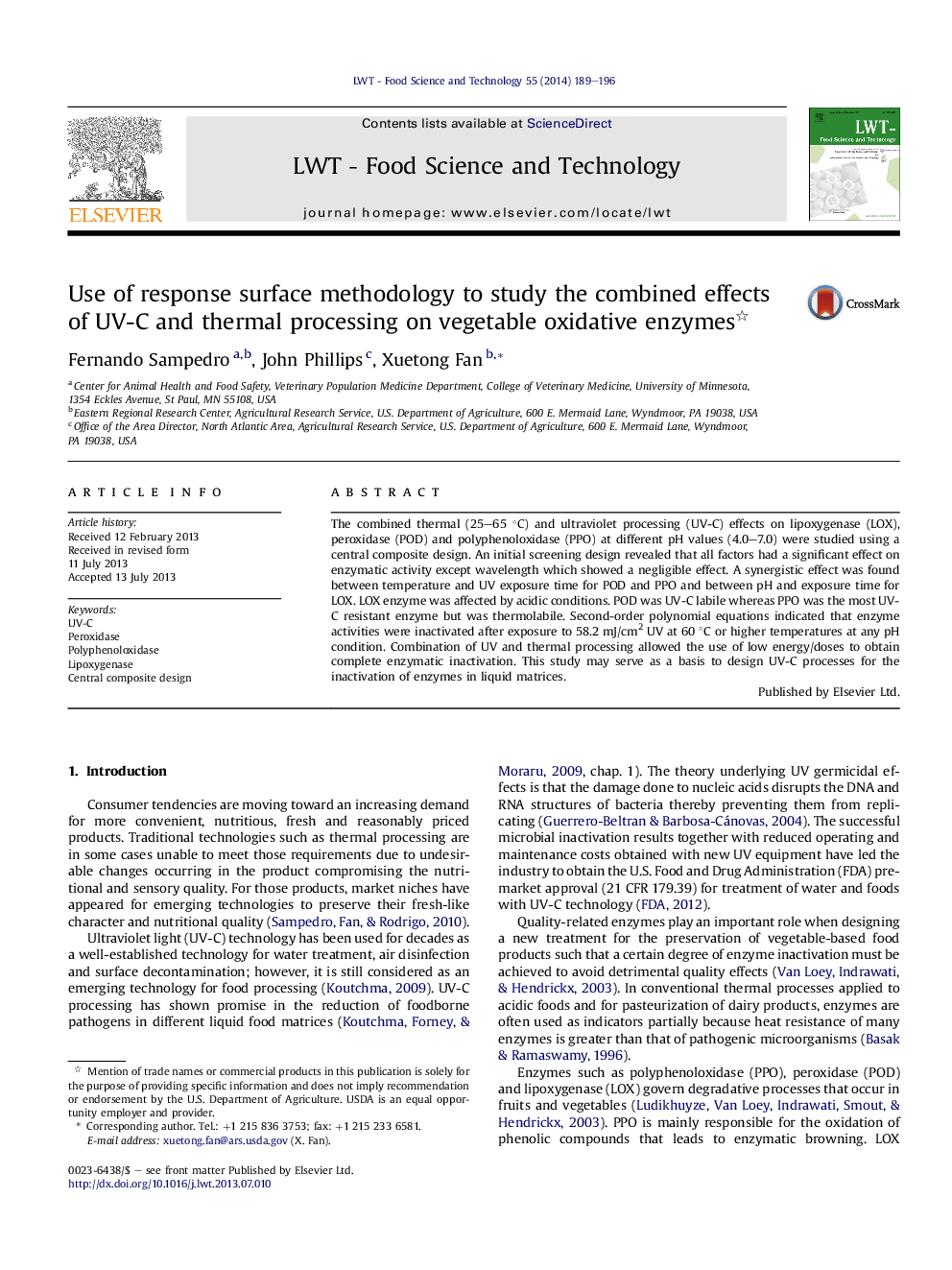| کد مقاله | کد نشریه | سال انتشار | مقاله انگلیسی | نسخه تمام متن |
|---|---|---|---|---|
| 6403900 | 1330898 | 2014 | 8 صفحه PDF | دانلود رایگان |

- A combined UV-C and thermal treatment is able to inactivate food oxidative enzymes.
- Enzymes were inactivated after UV treatment of 58.2 mJ/cm2 UV at 60 °C at any pH condition.
- Synergetic effect between UV and temperature was found.
- Low energy was used to obtain complete enzymatic inactivation.
The combined thermal (25-65 °C) and ultraviolet processing (UV-C) effects on lipoxygenase (LOX), peroxidase (POD) and polyphenoloxidase (PPO) at different pH values (4.0-7.0) were studied using a central composite design. An initial screening design revealed that all factors had a significant effect on enzymatic activity except wavelength which showed a negligible effect. A synergistic effect was found between temperature and UV exposure time for POD and PPO and between pH and exposure time for LOX. LOX enzyme was affected by acidic conditions. POD was UV-C labile whereas PPO was the most UV-C resistant enzyme but was thermolabile. Second-order polynomial equations indicated that enzyme activities were inactivated after exposure to 58.2 mJ/cm2 UV at 60 °C or higher temperatures at any pH condition. Combination of UV and thermal processing allowed the use of low energy/doses to obtain complete enzymatic inactivation. This study may serve as a basis to design UV-C processes for the inactivation of enzymes in liquid matrices.
Journal: LWT - Food Science and Technology - Volume 55, Issue 1, January 2014, Pages 189-196